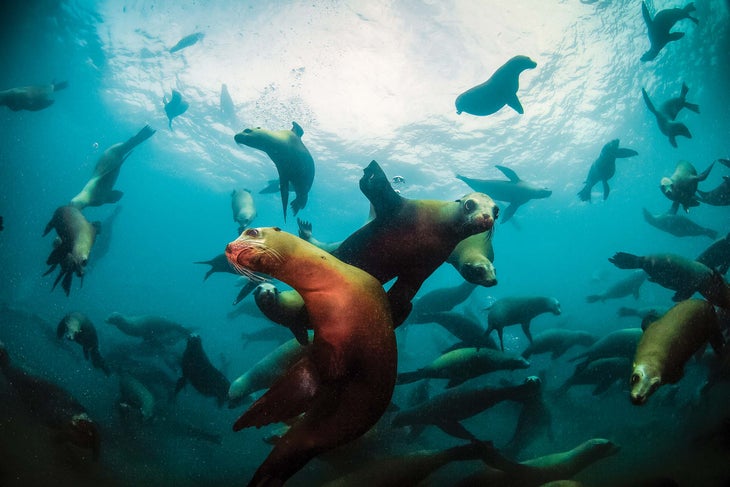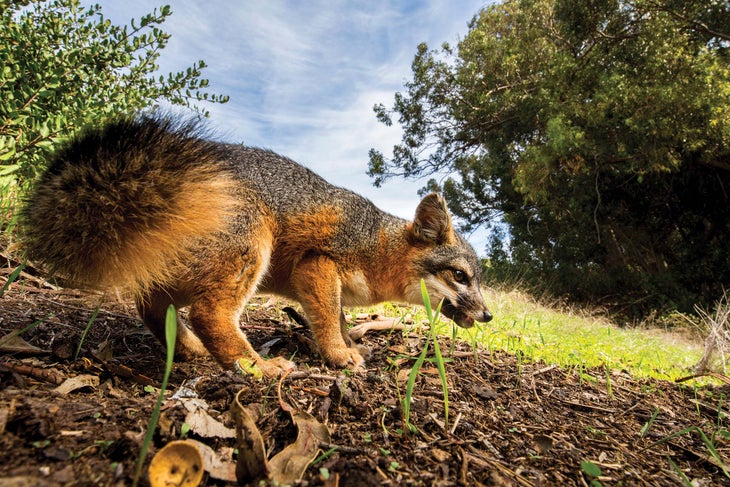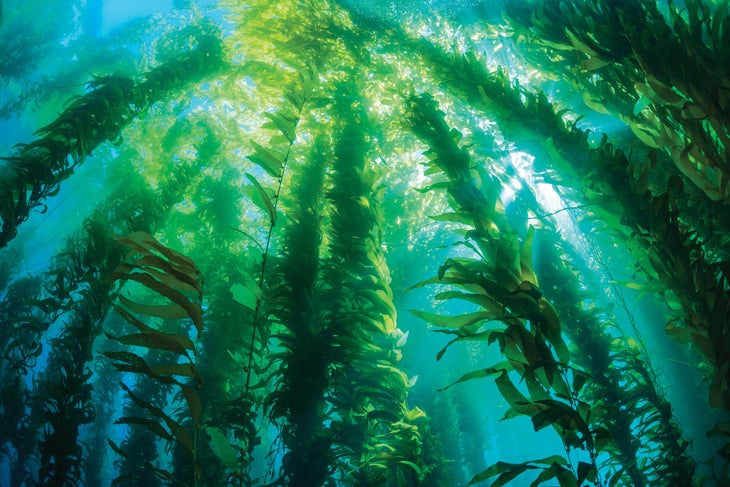Heading out the door? Read this article on the new Outside+ app available now on iOS devices for members! Download the app.
The archipelago that makes up California’s Channel Islands National Park is a time capsule. When you step off the ferry, you enter a vanished world: Sheer seaside cliffs and inland meadows, where elephant seals rather than tourists crowd the beaches. As the fog parts before the ferry bow, the noise of one of Earth’s most populated regions is left far behind, replaced by the roar of waves and the shrill cries of gulls and falcons.

In these islands fall is a season of animalian visitors, with migratory songbirds sweeping in to join endemic shrikes and bright blue scrub jays in Southern California’s most important seabird nesting ground. Offshore, blue whales head south for the winter, blowing spouts of seawater towards the cliffs. This is the best time for backpackers to visit, too, as beach camping is only allowed in fall and early winter (Santa Rosa’s 55 miles of shoreline have the prime seaside sites), and autumn has the best combo of comfortable temps and sunny days for exploring over 50 miles of trail.

There’s more to see than just the migrators, though: The Channel Islands are home to dozens of species found nowhere else in the world, like the diminutive island fox (the largest are only a foot tall). No matter how long you spend in this last bastion of the California coast’s wild past, there is one guarantee: You won’t want to leave.

Do it
- Island Packers ferries go to all 5 islands, but the schedule varies by season.
- Permit Required; reserve them in advance
